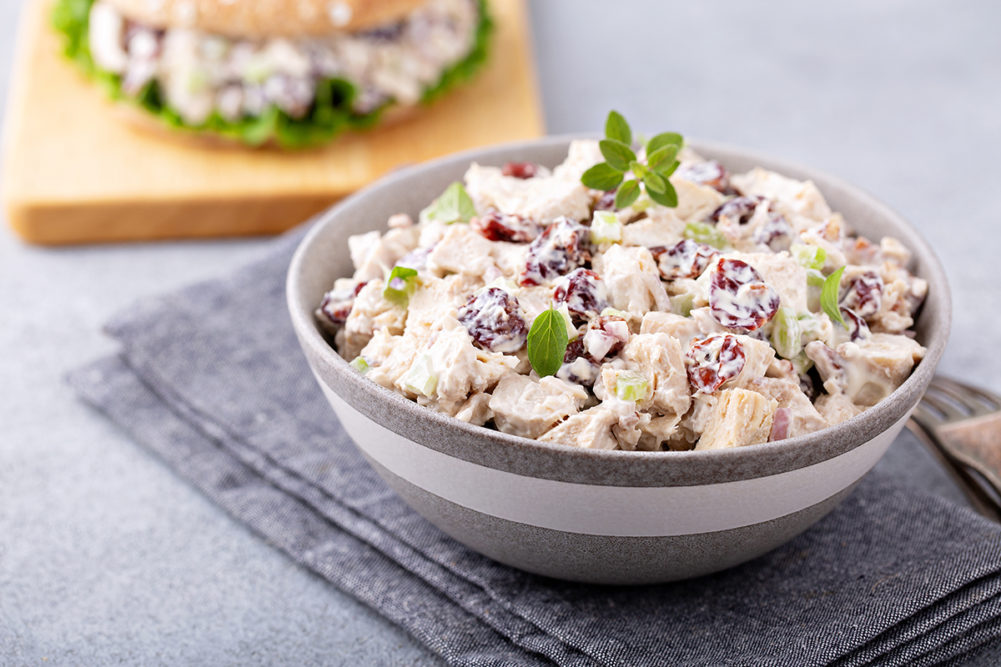In response to food inflation, consumers have adjusted their shopping habits in two major ways that have given supermarket delis a boost.
The first shift has been consumers buying more prepared foods from grocery stores rather than restaurants. This change was originally sparked by the pandemic as foodservice establishments were required to close and consumers sought out restaurant-quality items that were pre-packaged and ready to take and eat at home.
As food costs have risen, many consumers have continued to choose supermarket deli products over takeout from restaurants to save money.
According to The NPD Group, all income groups had lower per capita restaurant visits during the first two years of the pandemic, but households with incomes under $75,000 continued to show a decline in restaurant visits in the quarter ending in June 2022.
“High food prices affect all consumers, particularly lower-income households,” said David Portalatin, food industry adviser at The NPD Group. “Our research shows that households with incomes under $75,000 represent 46% of the US population. These households are a critical demographic for food manufacturers, grocers and foodservice operators to understand how they manage their food spending today.”
The second shift due to inflation has been an increase in private label sales. The NPD Group reported that in the quarter ending in June 2022, lower-income households purchased private label foods 26% more than higher-income households.
Seeing the difference in price for the same products, many consumers have branched out of their brand-loyal shopping behaviors and tried the private label version of what they would normally buy.
Consumers who maybe would not have picked a private label otherwise are finding that these brands are also high in quality, and they are becoming more comfortable trying other products under the private brand.
According to The NPD Group, almost half of consumers in lower-income households said they plan to buy more private label products than they did in the past year.
Minneapolis-based Target Corp. is one of many supermarket retailers offering high-quality deli salads under a private label. Target’s Good & Gather brand currently has four deli salad products in its lineup including a pasta salad, egg salad and two different chicken salads.
Good & Gather Creamy Three Cheese Pasta Salad
Made with cavatappi pasta noodles and cheddar, mozzarella and parmesan cheeses, the Good & Gather Three Cheese Pasta Salad is marketed as a side dish for burgers, hot dogs, brats and other kinds of barbecue.
The pasta salad is sold in plastic 10.58-ounce containers with a bright orange label. The packaging also has images of the individual ingredients, including green onion and parsley, that give consumers a quick and easy way to identify what it is made of and makes the product look fresh.
Good & Gather Egg Salad
Target’s Good & Gather Egg Salad is made with eggs, mustard, red bell peppers and relish. These ingredients can also be clearly seen on the bright purple label on the package. Sold in 12-ounce plastic containers, the egg salad is marketed as either a side dish to eat on its own or as an ingredient for sandwiches.
Good & Gather Rotisserie-Seasoned Chicken Salad
Also available in 12-ounce plastic packaging, the Good & Gather Rotisserie-Seasoned Chicken Salad has a bright orange label with pictures of white chicken meat and celery. It is marketed as a dip for snacking, ingredient for sandwiches or even an entertainment spread for hosting guests.
Good & Gather Rosemary Chicken Salad
Packaged in a 12-ounce plastic container with a bright green label, the Good & Gather Rosemary Chicken Salad does not have images of the chicken meat but instead shows fresh herbs, cranberries, celery and lemon wedges. It is also marketed as a versatile product for wraps, sandwiches, snacking and hosting.
SNAP Benefits
Recently, Target made it possible for customers to use their Supplemental Nutrition Assistance Program (SNAP) payment on SNAP-eligible grocery items online.
Many of the lower-income consumers who have been gravitating away from restaurant purchases and trying more private label foods like the Good & Gather deli salads are also SNAP benefits users.
Having the option to use SNAP payment for e-commerce not only makes it easier for these consumers to buy groceries, but it also creates an opportunity for them to browse the Prepared Meal & Sides section on Target.com when looking for a convenient, restaurant-quality meal.

